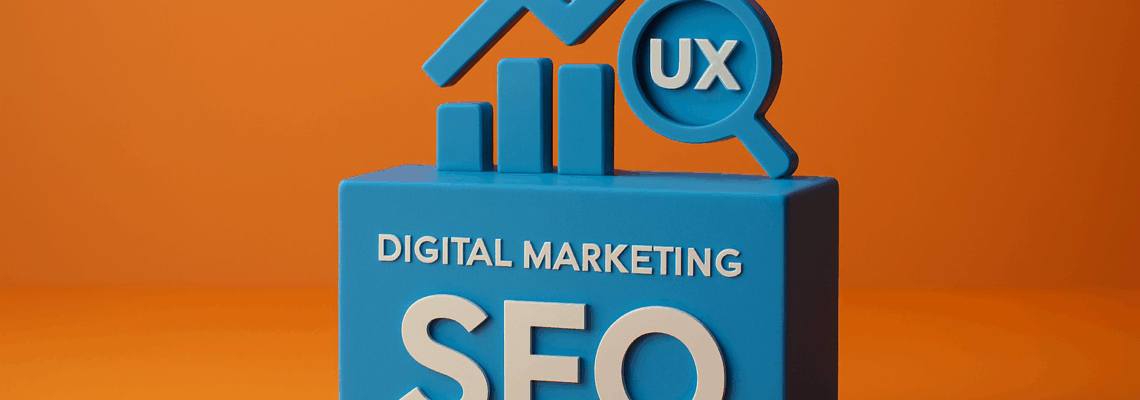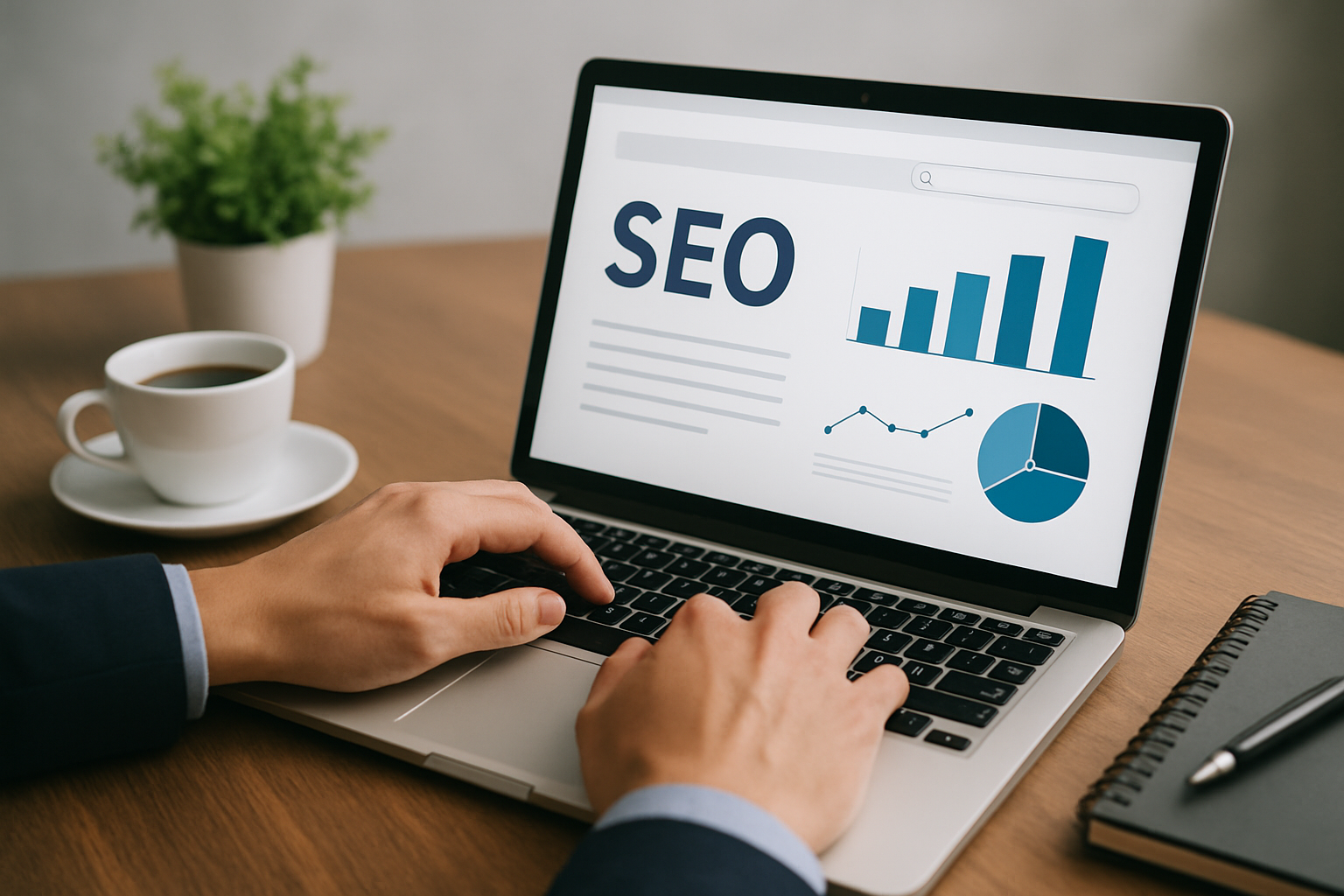Digital Marketing and Search Engine Optimization: The Actionable Cornerstone Guide to Align SEO, Content, PPC & UX for Sustainable Growth
If you are trying to get serious about digital marketing and search engine optimization, you are in the right place. Think of this as your practical, no-fluff playbook for turning scattered efforts into a cohesive growth engine. We will connect the dots between organic visibility, paid traffic, and on-site experiences so you can win more of the right clicks and convert them into revenue. Along the way, you will see how Internetzone I blends strategic planning with execution to help companies of all sizes build a durable competitive edge.
Here is the big idea: when search engine optimization, content strategy, PPC (pay-per-click), and UX (user experience) operate together, they compound. Your brand becomes easier to discover on the SERP (search engine results page), each visit costs less, and conversion hurdles melt away. That alignment matters because industry studies consistently show the majority of online journeys start with search and that branded credibility rises when your content ranks and your ads appear in harmony. Ready to turn silos into a flywheel you can actually control week to week?
Why Alignment Beats Silos: SEO (search engine optimization), Content, PPC (pay-per-click), and UX (user experience) Together
Let’s be honest: it is common to see a brilliant ad account hindered by slow pages or a ranking powerhouse starved of conversion rate optimization. Alignment turns that chaos into focus. Start with a shared audience map, not channel-first tactics. If the search intent shows people want comparisons, your organic pages should offer them, your PPC (pay-per-click) ad groups should mirror them, and your UX (user experience) should make choosing fast and frictionless. Internetzone I builds that thread into every deliverable, pairing National and Local SEO (search engine optimization) research with content outlines, landing page wireframes, and AdWords (Google Ads) Certified PPC (pay-per-click) targeting so nothing gets lost in translation.
The payoff shows up in compounding metrics. When pages load in under two seconds and answer search intent clearly, PPC (pay-per-click) Quality Scores rise, CPC (cost per click) falls, and organic rankings stabilize as dwell time increases. Add schema for rich results, and your CTR (click-through rate) can jump without changing your rank position. We routinely see that improving UX (user experience) reduces acquisition cost across channels, not just organic. It sounds simple, but that is the point: clear intent mapping, shared keyword clusters, and a unified content calendar are the small hinges that swing big doors.
Digital Marketing and Search Engine Optimization in Practice: The 4-Pillar Framework
If you want an operating model you can deploy this quarter, use the four pillars below. They keep strategy high-level while translating into weekly to-dos. Internetzone I runs this framework across startups, regional service brands, and enterprise eCommerce, adjusting the levers by industry and stage. You do not need a complicated stack to start. You need clearly owned deliverables, a cadence that does not slip, and a simple way to measure momentum. As you scan the table, ask yourself: which pillar is holding back the others right now?
Watch This Helpful Video
To help you better understand digital marketing and search engine optimization, we’ve included this informative video from Google Career Certificates. It provides valuable insights and visual demonstrations that complement the written content.
| Pillar | Primary Goal | Core Activities | Owned By | Weekly Focus Metric |
|---|---|---|---|---|
| Visibility | Earn discoverability on the SERP (search engine results page) | Technical SEO (search engine optimization) audits, internal linking, schema, site speed | Internetzone I SEO (search engine optimization) Team | Impressions, index coverage, Core Web Vitals pass rate |
| Intent Capture | Match queries with the right ad and page | AdWords (Google Ads) Certified PPC (pay-per-click), negative keywords, SKAGs (single keyword ad groups), landing page alignment | Internetzone I PPC (pay-per-click) Team | Quality Score, CPC (cost per click), CTR (click-through rate) |
| Experience | Reduce friction and increase trust | UX (user experience) research, mobile-first web design, form optimization, accessibility, trust badges and reviews | Internetzone I Web Design and UX (user experience) | Bounce rate, time on page, form completion rate |
| Content | Answer user questions better than competitors | Topic clusters, briefs, E-E-A-T (experience, expertise, authoritativeness, trustworthiness) signals, multimedia support | Internetzone I Content Team | Ranked pages, non-branded clicks, assisted conversions |
Notice the interlocks. A content brief that includes internal link targets speeds up Visibility. A landing page designed with UX (user experience) best practices boosts Intent Capture and reduces CPC (cost per click). Reviews managed through Reputation Management build trust that converts visitors who are on the fence. Internetzone I’s Managed Web Services keep these moving in sync, from mobile responsive, SEO (search engine optimization)-focused web design to ongoing technical fixes that protect performance. When the four pillars are clicked together, channel silos disappear and growth looks surprisingly steady.
National and Local SEO (search engine optimization): One Strategy, Two Plays
Ranking nationally and locally is not either-or. You need both, but they serve different intents. National content builds authority and attracts links with definitive guides, while Local pages convert in-market buyers through proximity and proof. Internetzone I runs a two-speed approach: long-form national hubs updated quarterly and laser-focused Local landing pages baked with NAP (name, address, phone number) precision, city modifiers, and service schema. Together, you earn authority broadly and cash it in where people buy.
| Dimension | National SEO (search engine optimization) | Local SEO (search engine optimization) |
|---|---|---|
| Primary Goal | Authority, brand reach, demand generation | Foot traffic, calls, form fills from nearby customers |
| Content Focus | Ultimate guides, research, category pillars | Location pages, service + city pages, FAQs (frequently asked questions) |
| Technical Essentials | Site architecture, canonicalization, scalable internal links | GMB (Google Business Profile) optimization, NAP (name, address, phone number) consistency, local schema |
| Signals | High-quality backlinks, brand mentions, digital PR (public relations) | Reviews, proximity, local citations, geo modifiers |
| Time to Impact | 3 to 6 months for competitive terms | 4 to 12 weeks for priority locations |
Want a quick win list you can tackle this month? For Local, claim and optimize every Google Business Profile, add service categories, post weekly updates, and ask for reviews with photos. For National, ship one top-of-funnel pillar with three support articles and interlink them clearly. Internetzone I pairs both plays with AdWords (Google Ads) Certified PPC (pay-per-click) to cover gaps while rankings climb, ensuring no high-intent query goes unanswered. That’s how you earn both trust and transactions without waiting a full quarter to see movement.
Budgets, KPIs (key performance indicators), and Benchmarks: Decide What to Measure and Fund
Budget conversations get easier when you anchor them to the customer journey and a short list of KPIs (key performance indicators). Organic investment compounds and reduces reliance on paid over time, while PPC (pay-per-click) buys precise intent now and supplies keyword intelligence that feeds content. Meanwhile, UX (user experience) and CRO (conversion rate optimization) amplify every dollar. Internetzone I’s dashboards connect channels into one view: cost per qualified visit, conversion rates by device, and assisted revenue. The goal is not perfect attribution. It is confident decisions at weekly and quarterly cadence.
| Channel | Budget Style | Primary KPI (key performance indicator) | Helpful Benchmark |
|---|---|---|---|
| SEO (search engine optimization) | Compounding investment | Non-branded organic clicks, ranked pages, assisted conversions | Top 3 ranks deliver roughly 50 to 60 percent of clicks in many verticals |
| PPC (pay-per-click) | Responsive spend | CPC (cost per click), CPA (cost per acquisition), ROAS (return on ad spend) | Quality Score 7+ often cuts CPC (cost per click) by double-digit percentages |
| UX (user experience) and CRO (conversion rate optimization) | Always-on optimization | Form completion rate, add-to-cart rate, checkout completion | Even a one second faster load often lifts conversions meaningfully |
| Reputation Management | Steady cadence | Average rating, review velocity, response time | Brands with 4.5 stars or more typically see higher CTR (click-through rate) |
What about eCommerce? Internetzone I’s eCommerce Solutions tie catalog optimization and product schema with PPC (pay-per-click) Shopping feeds, remarketing, and CRO (conversion rate optimization) for product pages. For services, we focus on lead forms, chat prompts, and phone tracking with clean attribution. Either way, you get reporting that answers: where are we wasting clicks, which pages are rising, and what one change this week would move the needle most? That level of specificity keeps teams aligned and budgets respected.
From Click to Customer: UX (user experience) and CRO (conversion rate optimization) Wins That Lift ROI (return on investment)
Traffic without trust is just a higher hosting bill. Three UX (user experience) upgrades consistently deliver across industries. First, mobile-first web design with legible typography, tap-friendly buttons, and thumb zones for navigation. Second, intent-specific CTAs (calls to action) such as “Get a Same-Day Quote” for services or “See Size Guide” for apparel, positioned above the fold but repeated deeper for scrollers. Third, speed. Optimize images, serve critical CSS (cascading style sheets) inline, and defer nonessential scripts. The faster the first paint, the lower the bounce rate. Internetzone I bakes these into every web design engagement so organic and paid traffic do not go to waste.
Then layer in CRO (conversion rate optimization) experiments. Shorten forms to the fewest fields, add social proof near CTAs (calls to action), and remove unnecessary pop-ups on mobile. Map friction with analytics: where do users rage-click, hesitate, or back out? Use A/B (split testing) to validate changes before scaling, and watch ROAS (return on ad spend) climb as conversion rate rises. If you sell online, treat product detail pages like landing pages: benefits-led copy, high-quality reviews, sticky add-to-cart, and clear shipping info. It is not glamorous, but small usability wins stack into measurable ROI (return on investment).
Your 90-Day Action Plan with Internetzone I: Audit, Build, Launch, Scale
Want a concrete path from idea to impact? Here is a practical 90-day plan we run for new partners. It blends National and Local SEO (search engine optimization), PPC (pay-per-click) acceleration, and UX (user experience) fixes so you see signal early without sacrificing long-term compounding. Internetzone I coordinates strategy across teams and manages implementation through Managed Web Services, so you do not need to juggle freelancers or chase timelines. You get one accountable partner and a roadmap that is actually feasible.
- Weeks 1 to 3: Audit and Architect. Full technical SEO (search engine optimization) crawl, content gap analysis, PPC (pay-per-click) account teardown, and UX (user experience) heuristics review. Prioritize fixes by impact and effort.
- Weeks 4 to 6: Build and Optimize. Ship one national pillar plus three support articles, launch two Local pages, fix top technical blockers, and design two high-intent landing pages.
- Weeks 7 to 9: Launch and Learn. Turn on AdWords (Google Ads) Certified PPC (pay-per-click) campaigns that mirror your clusters, add remarketing, and begin CRO (conversion rate optimization) tests on forms and product pages.
- Weeks 10 to 12: Scale and Systemize. Expand Local coverage, strengthen internal linking, publish two authority-building thought pieces, and roll weekly UX (user experience) improvements into a backlog.
Two quick snapshots to visualize outcomes: A regional home services brand used Internetzone I’s Local SEO (search engine optimization) plus Reputation Management to lift calls across three cities while PPC (pay-per-click) filled gaps for new neighborhoods. An eCommerce apparel company paired technical fixes and product schema with Shopping campaigns and CRO (conversion rate optimization), lifting add-to-cart rate and stabilizing ROAS (return on ad spend). Different industries, same pattern: coordinated moves outpace isolated tactics.
How Internetzone I Connects the Dots Across Services Without the Busywork
You do not need ten vendors to grow. Internetzone I delivers National and Local SEO (search engine optimization), Web Design that is mobile responsive and SEO (search engine optimization)-focused, eCommerce Solutions, Reputation Management, AdWords (Google Ads) Certified PPC (pay-per-click) Services, and Managed Web Services under one roof. That matters because the most common blockers are handoffs and guesswork. Our team handles the CMS (content management system), implements schema, sets up sitewide tracking, and monitors uptime so you can focus on strategy. Each month you receive a plain-language scorecard with progress against KPIs (key performance indicators) and a short list of recommended moves. No mystery. Just traction.
What questions should you ask any agency? Ask how they integrate keyword research into both content briefs and ad groups. Ask how they prioritize technical fixes by business value. Ask for examples of UX (user experience) changes that improved conversion rates within four weeks. If the answers are vague, you will likely inherit the coordination burden. Internetzone I’s approach is different: we align digital marketing and search engine optimization with the rest of your funnel and own the outcomes across channels.
Promise in one line: when you align digital marketing and search engine optimization, content, PPC (pay-per-click), and UX (user experience), growth compounds steadily. Imagine your next 12 months powered by an operation that ships on time, with rankings rising, ad costs easing, and a website that feels effortless to use. What would that predictability free you to build next?
Additional Resources
Explore these authoritative resources to dive deeper into digital marketing and search engine optimization.
Accelerate Growth With Internetzone I’s National and Local SEO (search engine optimization)
Strengthen visibility, reputation, and conversions with digital marketing and search engine optimization tailored for companies of every size.


